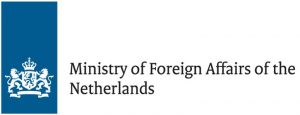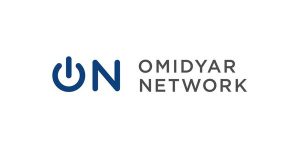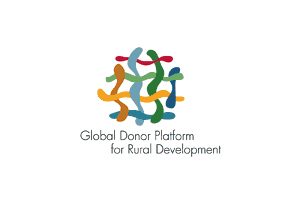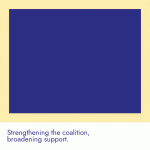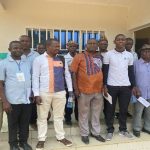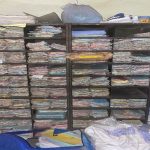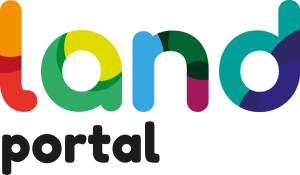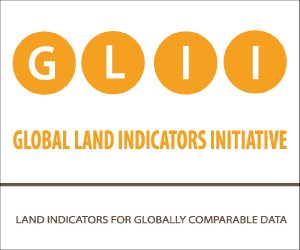
Throughout the world, land provides a primary source of income, food security, cultural identity and shelter. It also serves as a fundamental asset for the economic empowerment of the poor and provides a safety net in times of hardship. To enhance access to information and awareness by land and data community and the wider stakeholders around land indicators in the SDGs and related processes for their monitoring, GLTN in collaboration with Land Portal Foundation produced the Land and SDGs dashboard.
The Dashboard covers:
- SDGs 1, 2, 5, 11 and 15
- 8 Targets and 12 indicators related to land
- Targets 1.4 (Indicator -1.4.2 on tenure security)
- Target 2.3 (Indicators – 2.3.1 and 2.3.2 addressing smallholder farmers)
- Target 2.4 (Indicator – 2.4.1 on agricultural area)
- Target 5.a (indicators- 5.a.1 – securing women’s agricultural land, and 5.a.2 on legal framework on securing women’s land)
- Target 11.1 (Indicators -11.1.1, 11.3.1 and 11.7.1 urban informality, access to housing, open spaces and land consumption rate.)
- Target 15.1 (indicators 15.1.1, 15.1.2 and 15.3.1 on forest areas, biodiversity and land degradation neutrality)
The Dashboard provides information on all the SDGs land indicators, indicators classification by IAEG-SDGs and related work; role of custodian, other stakeholders, events and workshops on land governance and monitoring around the SDGs.
It also includes:
- A timeline featuring important decisions that have been made for land indicators
- The latest news and blogs on land and the SDGs.
- A table outlining the Tier Status of each indicator.
- The context and essential information related to each indicator, including the method for measuring the indicator, a description of why the indicator is important and who is working on monitoring the indicator.
- Selected Land Portal data visualizations, such as FAO’s Gender and Land Rights data as well as LandMark’s and RRI’s data on the amount of legally recognized indigenous and community land for Indicator 1.4.2.
- Blogs, news, events, debates and library resources relating specifically to each indicator.
- Key dates for the specific indicators, the custodian agency responsible for the indicator, official partners of the indicator as identified by the UN and indicator-specific links.
Championing land indicators for globally comparable data.
GLII partners successfully proposed and advocated for inclusion of land in the SDGs; with specific indicators included for monitoring progress made on various land governance issues. GLII platform members and supporters have remained at the fore front in communicating and raising awareness of the importance of monitoring land governance issues as it relates to SDGs and other regional and global frameworks including the VGGTs and LPI.
GLII work includes other land governance monitoring initiatives beyond the provisions of land indicators in the SDGs. While supporting the efforts of custodian agencies charged with the responsibility of developing the methodology for monitoring the land indicators in the SDGs, GLII partners have continued to engage national, regional and global stakeholders in the bid to raise awareness about land indicators in the SDGs, their inter-relatedness, promoting gender responsiveness, and stakeholders need for prioritization of monitoring land indicators at country level. This effort is greatly supported by the Ministry of Foreign Affairs of the Government of Netherlands through Global Land Tool Network.
Land Indicators embedded in the SDGs
In September 2015, world leaders unanimously approved the Sustainable Development Goals (SDGs), a comprehensive set of 17 goals and 169 targets, referred together as the 2030 agenda. The Inter-agency and Expert Group on SDG Indicators (IAEG-SDGs), composed of United Nations Member States, developed global indicator framework to track progress towards the achievement of the SDGs, which were adopted by the UN ECOSOC in March 2016.
Among the indicators proposed by the IAEG-SDGs are numerous indicators related to land, advocated for and supported by various global land community actors including the Global Donor Working Group on Land, members of the Global Land Indicators Initiative, FAO, UN SDSN and others. Indicators in the SDGs monitoring framework have been categorized and assigned a ‘tier status,’ meaning that the indicator does not yet have a methodology for tracking it (Tier 3), has a methodology but no regular data (Tier 2), or has both a methodology and regular data (Tier 1). The development of a methodology for measuring respective indicators is assigned by IAEG-SDGs to various UN agencies, in collaboration with other stakeholders as “custodian agencies”.
In the last quarter of 2017 the IAEG-SDGs will review progress made in the development of Tier 3 indicators, including indicator 1.4.2 for measuring tenure security including perception, and indicator 5.a.2 on countries’ legal provisions that secure women’s land rights among others.
Supported by:
